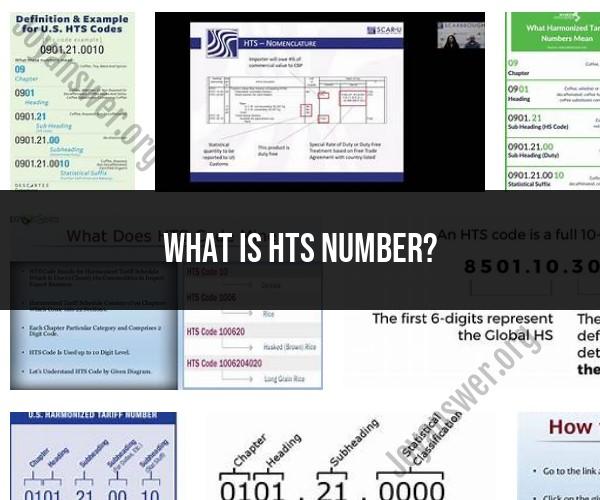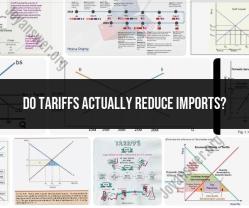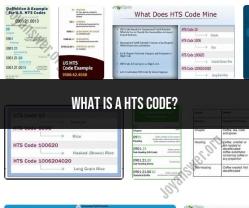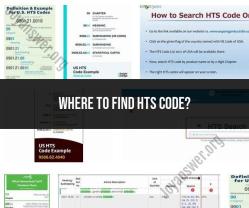What is HTS Number?
The HTS number, or Harmonized Tariff Schedule number, is a standardized numerical code used to classify and categorize products and goods for international trade and customs purposes. It is a crucial component of the Harmonized System (HS), which is a global system for classifying and coding products to facilitate international trade.
Here's a breakdown of what the HTS number represents:
Global Standard: The Harmonized System (HS) is a standardized system used by customs authorities worldwide to classify products consistently. It helps ensure that customs duties, taxes, and regulations are applied uniformly across different countries.
Numerical Code: The HTS number consists of a series of digits arranged in a specific format. Each digit in the code has a particular meaning and represents different levels of classification, from the broadest category to the most specific subcategory.
Classification: The code classifies products based on their characteristics, such as what they are made of, their intended use, and other distinguishing features. This classification is hierarchical, with broader categories at the beginning of the code and increasingly specific categories as you move towards the end.
Customs Declarations: Importers and exporters use HTS numbers on customs declarations and shipping documents to indicate the nature and category of the products being traded. These numbers help customs authorities determine the appropriate duties, taxes, and regulations that apply to each product.
Trade Facilitation: The use of HTS numbers simplifies and streamlines international trade by providing a common language for classifying products. It reduces misunderstandings and disputes related to product classification and ensures that trade flows smoothly across borders.
Updated Regularly: The HTS is updated periodically to reflect changes in product technology, industry practices, and trade patterns. These updates ensure that the system remains relevant and accurate.
Harmonized Code: The term "harmonized" in Harmonized Tariff Schedule reflects the international effort to harmonize or standardize product classification and coding across countries.
In the United States, the HTS number is commonly used in customs documentation, trade agreements, and international trade regulations. Other countries use similar systems, such as the European Union's Combined Nomenclature (CN) and the International Convention on the Harmonized Commodity Description and Coding System (HS Convention).
In summary, an HTS number is a standardized numerical code used for the classification and categorization of products in international trade. It plays a crucial role in facilitating the smooth flow of goods across borders by providing a common language for customs authorities and traders to understand and classify products accurately.
HTS Number Explained: Understanding Harmonized Tariff Schedule
The Harmonized Tariff Schedule (HTS) is a classification system used by the United States Customs and Border Protection (CBP) to classify imported goods. The HTS is based on the International Harmonized System (HS), which is used by over 200 countries worldwide.
The HTS is a 10-digit code that identifies a specific product. The first six digits of the HTS code are the same as the HS code, and the last four digits are specific to the United States.
The HTS code is used to determine the applicable customs duties and taxes that must be paid on imported goods. The HTS code is also used to track the movement of goods across international borders and to collect trade statistics.
Decoding HTS Numbers: What Is HTS Code?
The HTS code is a 10-digit code that is used to classify imported goods. The first six digits of the HTS code are the same as the HS code, and the last four digits are specific to the United States.
The HTS code is structured as follows:
- Digits 1-2: Chapter: The chapter identifies the broad product category. For example, Chapter 1 of the HTS covers live animals and animal products.
- Digits 3-4: Heading: The heading identifies the more specific product category. For example, Heading 01.01 of the HTS covers live horses.
- Digits 5-6: Subheading: The subheading identifies the even more specific product category. For example, Subheading 01.01.10 of the HTS covers pure-bred breeding horses.
- Digits 7-8: Statistical Tariff Number (STN): The STN is used to collect trade statistics.
- Digits 9-10: Country-specific code: The country-specific code is used to identify the country of origin of the goods.
Harmonized Tariff Schedule Code: HTS Number Basics
Here are some of the basics of the HTS code:
- The HTS code is a 10-digit code that is used to classify imported goods.
- The first six digits of the HTS code are the same as the HS code, and the last four digits are specific to the United States.
- The HTS code is used to determine the applicable customs duties and taxes that must be paid on imported goods.
- The HTS code is also used to track the movement of goods across international borders and to collect trade statistics.
To find the HTS code for a specific product, you can use the CBP's HTS Lookup tool. You can also search for the HTS code on the CBP's website or in the HTS publication.
If you have any questions about the HTS code or how to use it, you can contact the CBP for assistance.







